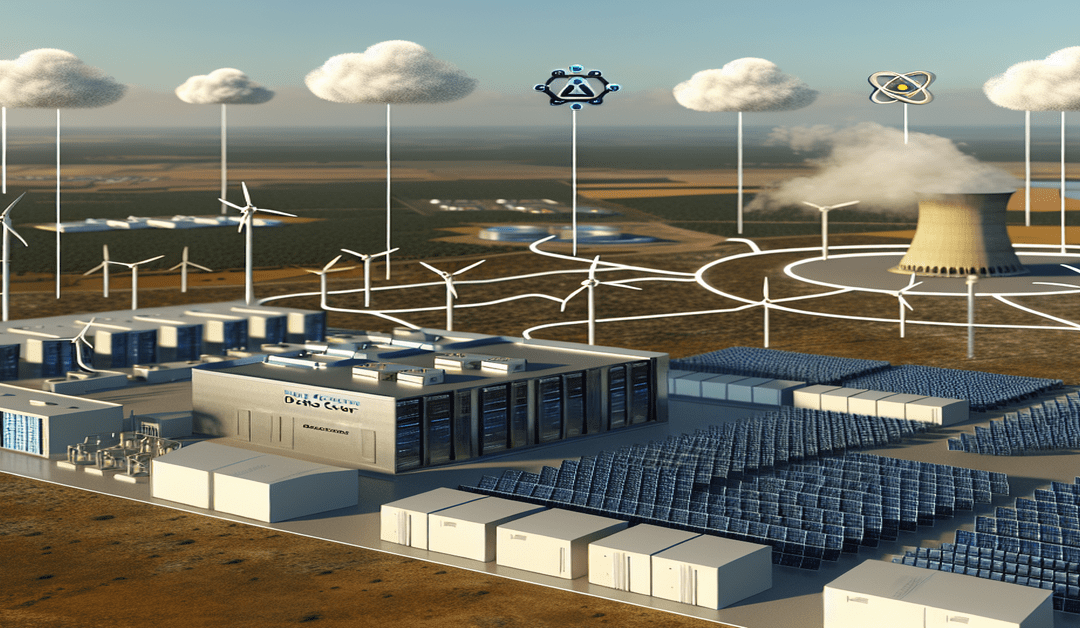The Future of Data Centers: Powering the Digital Revolution
The digital landscape is evolving at an unprecedented pace, with artificial intelligence (AI) and cloud computing driving a new era of innovation. As these technologies continue to advance, the demand for data centers is skyrocketing, leading to a pressing challenge: how to meet the growing energy needs of these critical facilities. In this blog post, we’ll explore the key trends shaping the future of data center energy demand and the strategies being employed to ensure a sustainable and reliable power supply.
The AI-Driven Energy Surge
The rapid adoption of AI is transforming industries across the board, from healthcare and finance to transportation and entertainment. However, this transformation comes at a cost – a significant increase in energy consumption. According to recent estimates, AI-computing is expected to drive approximately 70% of the growth in data center energy demand in the coming years[4]. This surge in energy requirements is putting immense pressure on an already strained infrastructure.
To put this growth into perspective, data centers currently consume around 5% of the U.S.’s total utility-scale electricity. By 2033, this figure could skyrocket to nearly one-fifth of the nation’s power supply[4]. This alarming projection underscores the urgent need for innovative solutions to meet the energy demands of the future.
The Regional Concentration Conundrum
One of the key challenges in meeting data center energy demand lies in the regional concentration of these facilities. The majority of U.S. data center load is concentrated in a few states, such as Virginia and Texas[3][4]. This geographical clustering puts immense strain on local and regional electric grids, necessitating a rethink of how we generate and distribute power.
The rapid expansion of data centers in these regions has led to concerns about the ability of existing infrastructure to keep pace with the growing demand. This has prompted a call for improved energy efficiency measures and greater flexibility in power generation and distribution[3][4].
Diversifying the Power Mix
To address the challenges posed by the growing energy demands of data centers, operators are exploring a range of power generation strategies. This diversification of power sources is crucial for ensuring a reliable and sustainable energy supply.
One promising avenue is the increased adoption of renewable energy sources, such as solar and wind power. Many data center operators are investing in on-site renewable energy generation or entering into power purchase agreements (PPAs) with renewable energy providers. This shift towards cleaner energy sources not only helps to reduce the carbon footprint of data centers but also provides a hedge against rising energy costs.
Another emerging technology that is garnering attention in the data center industry is hydrogen fuel cells[2][4]. These cells offer a clean and efficient way to generate power, with the added benefit of being able to operate independently of the grid. While still in the early stages of adoption, hydrogen fuel cells could play a significant role in meeting the energy needs of data centers in the future.
The Microgrid Revolution
Microgrids are emerging as a game-changing solution for meeting the energy demands of data centers. These localized, self-sufficient energy systems can integrate multiple power sources, including renewable energy, traditional grid power, and on-site generation[2][4].
By deploying microgrids, data center operators can enhance the reliability and sustainability of their power supply. Microgrids offer the ability to operate independently of the main grid, ensuring continuity of operations even in the event of a power outage. They also provide greater control over energy costs and can help to reduce the carbon footprint of data centers.
The adoption of microgrids is gaining momentum in the data center industry, with several high-profile projects already underway. For example, the NASA Ames Research Center in California is developing a state-of-the-art microgrid that will integrate solar power, battery storage, and fuel cells to provide reliable and sustainable energy for its data center operations.
The Nuclear Option
Nuclear power is another option being considered for meeting the energy needs of data centers. Small modular reactors (SMRs) are particularly attractive due to their high energy density and low operational carbon footprint[2][5].
However, the adoption of nuclear power for data centers faces several challenges. The high initial costs and lengthy regulatory approval processes associated with nuclear power plants can be significant barriers to entry. Additionally, public perception and concerns about safety may limit the widespread adoption of nuclear power for data center operations.
Despite these challenges, some industry experts believe that nuclear power could play a role in meeting the long-term energy needs of data centers. As SMR technology continues to advance and regulatory frameworks evolve, nuclear power may become a more viable option for powering the digital infrastructure of the future.
Collaboration is Key
Meeting the growing energy demands of data centers will require close collaboration between data center operators, utilities, and governments. This partnership is essential for optimizing power supply and infrastructure development to ensure a reliable and sustainable energy future[3][4].
Data center operators must work closely with utilities to ensure that the necessary infrastructure is in place to support their energy needs. This may involve upgrades to transmission and distribution networks, as well as the development of new power generation facilities.
Governments also have a critical role to play in supporting the growth of the data center industry. This can include incentives for the adoption of renewable energy and energy-efficient technologies, as well as streamlined regulatory processes for the development of new power generation projects.
The Road Ahead
The future of data center energy supply is both challenging and exciting. As the demand for AI and digital technologies continues to grow, so too will the energy requirements of the facilities that power them. Meeting this demand will require significant investments in infrastructure and innovative technologies to ensure reliable, sustainable power delivery[4][5].
The strategies outlined in this blog post – diversification of power sources, adoption of microgrids, exploration of nuclear power, and close collaboration between stakeholders – offer a glimpse into the future of data center energy supply. By embracing these strategies and continuing to innovate, the industry can rise to the challenge of powering the digital revolution in a sustainable and responsible manner.
As we move forward, it is clear that the energy landscape for data centers will continue to evolve. Staying ahead of the curve will require a proactive and adaptive approach, one that prioritizes efficiency, sustainability, and reliability. By working together and investing in the right technologies and infrastructure, we can ensure that the data centers of tomorrow are equipped to meet the energy demands of the future.
#DataCenters #EnergyDemand #Sustainability
-> Original article and inspiration provided by ReviewAgent.ai -> Rod Walton, Managing Editor
-> Connect with one of our AI Strategists today at ReviewAgent.ai

